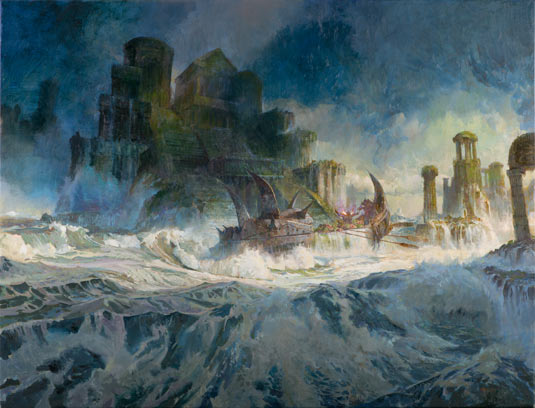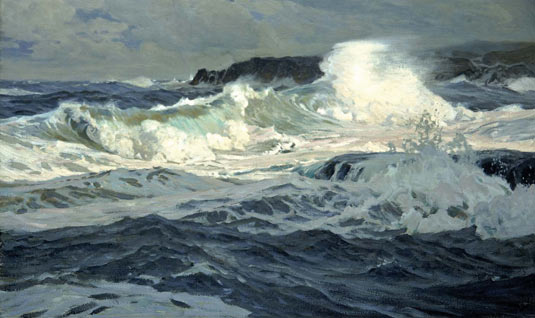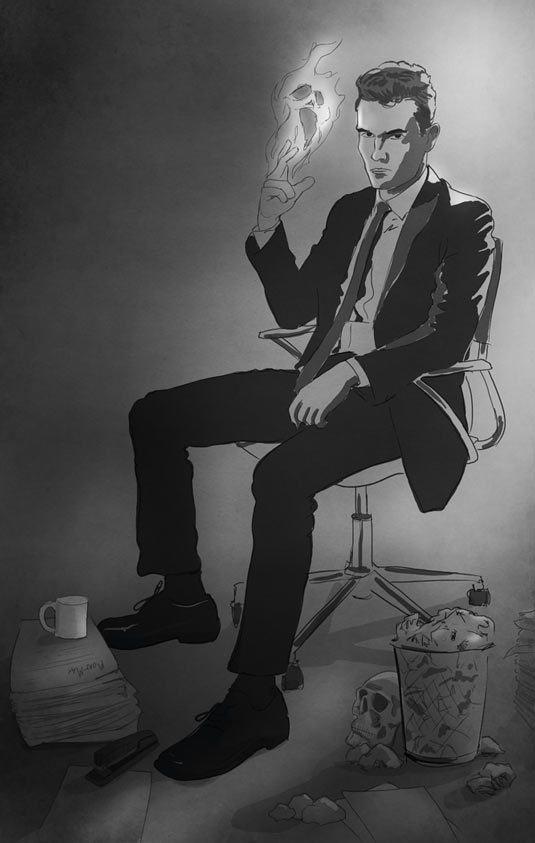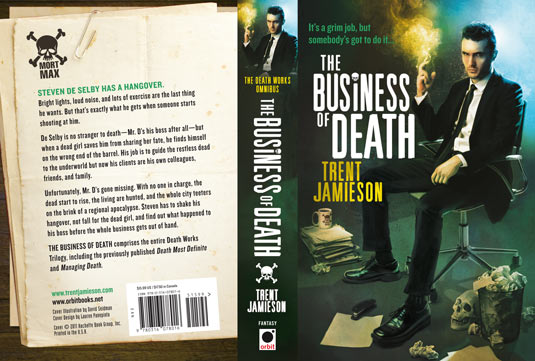When is copying another artist legitimate?
Pro artists debate the use of third-party imagery that goes beyond basic reference.

A huge, listing orc boat dwarfed by the Great Sea – waves barrelling, breaking over saw-toothed rocks. It's a painting meticulous in detail, right down to the proportion of the rivets. Craig Mullins created the World of Warcraft piece as part of Blizzard's Fine Art Project back in 2012, which he only recently uploaded to his personal website.
An animation posted on Warosu.org shows two sections of Craig's waves closely resemble those in the 1907 painting Southwesterly Gale, St Ives by American realist Frederick Judd Waugh. Much handwringing across message boards followed.

Craig responded with a Facebook comment, saying the image was a working comp for a physical oil painting: "I've used photos, 3D models (mine and others) paintings (mine and others) in every combination you can think of. If I had to ask what method I use mostly, it would be a simple block model (that I make) and painting with that in a reference layer. But 90 per cent of the work I've done is pretty much straight painting.
"I've also talked at length about the difference between art and commercial art. I'm an illustrator and paid to make an image that satisfies a client. I would say every technique is totally okay – as long as what was done is clear. Roy Lichtenstein was pretty clear about his process. This was not the case here. Hopefully, looking at the bulk of my work you can see that I'm competent enough to have done this painting in a different way than I did."
Realms of plagiarism
Using another artist's work as your own can quickly bring you into the realms of either copyright infringement or plagiarism. The former occurs when material restricted by copyright is used without consent. In this instance, Waugh died over 70 years ago and so his work's not copyrighted. It's in the public domain.
Plagiarism relates to false claims of authorship. It's a moral offence against the plagiarist's audience. So here the question is not a legal but a moral one: is it true, as the quote goes, that good artists copy and great artists steal?
Is it true, as the quote goes, that good artists copy and great artists steal?
Creative director Lauren Panepinto believes there are grey areas involved. "There's a difference between illustration and fine art. That difference is the client," she explains. "As an illustrator, ultimately your job is to please the client."
As creative director at sci-fi and fantasy book publisher Orbit Books, Lauren will often arrange a photoshoot to create the composition of a book cover, then decide who she's going to commission to illustrate the final piece. She has a very specific goal: to reach a target audience.


Some illustrators like these constraints, others don't. Lauren says the process of explicitly copying parts of a reference doesn't make the completed work any less artistic. Similarly, in commercial concept art studios around the world, techniques such as photobashing using stock photos are common practice because they're quick and cheap.
Lauren continues: "There's is a difference between artists using such methods as part of their process, and those using other people's art and pretending all the work is theirs alone." It boils down to acknowledgement. "You need to be absolutely clear you're building on something. If you're hiding that and taking credit for creating things you didn't do, there's a plagiarism problem," she says.
"Craig's mistake wasn't that he created the piece the way he did. He made a mistake when he uploaded art and included a piece without explaining the methods used, or perhaps uploaded a piece that wasn't meant to be part of his portfolio. It's hardly grounds for a witch-hunt. Nor does it call into question any other art he makes."
Next page: pro artists continue the debate on the use of third-party imagery...

Thank you for reading 5 articles this month* Join now for unlimited access
Enjoy your first month for just £1 / $1 / €1
*Read 5 free articles per month without a subscription

Join now for unlimited access
Try first month for just £1 / $1 / €1
Get the Creative Bloq Newsletter
Daily design news, reviews, how-tos and more, as picked by the editors.

The Creative Bloq team is made up of a group of art and design enthusiasts, and has changed and evolved since Creative Bloq began back in 2012. The current website team consists of eight full-time members of staff: Editor Georgia Coggan, Deputy Editor Rosie Hilder, Ecommerce Editor Beren Neale, Senior News Editor Daniel Piper, Editor, Digital Art and 3D Ian Dean, Tech Reviews Editor Erlingur Einarsson, Ecommerce Writer Beth Nicholls and Staff Writer Natalie Fear, as well as a roster of freelancers from around the world. The ImagineFX magazine team also pitch in, ensuring that content from leading digital art publication ImagineFX is represented on Creative Bloq.
